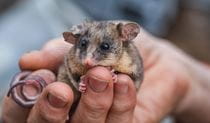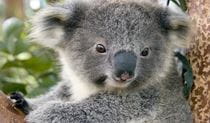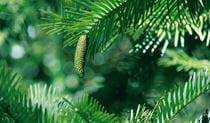Eastern bristlebird conservation program
The eastern bristlebird recovery program is helping to reverse the decline in populations of these rare and endangered native Australian birds.
Today less than 2,500 eastern bristlebirds remain in the wild. In NSW, only 3 populations exist, including the species’ stronghold in the Shoalhaven region, a smaller population on the NSW/Victoria border, and the most isolated population on the NSW/Queensland border. The northern population, around Border Ranges National Park, recorded less than 40 birds.
Under the Saving our Species program (SoS), NSW National Parks and Wildlife Service (NPWS) and the NSW Department of Planning and Environment’s Biodiversity Conservation Division are working with partners both on-park and off-park to bring this endangered bird back from the brink. SoS actions for this species include detailed population mapping, prescribed fire to restore grassy breeding habitat, weed and feral animal control, and a long-term captive breeding and release program.
Watch our video to learn more about eastern bristlebirds northern population recovery.
Genetic rescue mission for the northern birds
‘Genetic rescue’ aims to improve genetic diversity, disease resistance, and fertility rates of smaller populations, by introducing breeding birds from larger source populations.
Samples from wild eastern bristlebirds across their range are gathered for genetic analysis. This is used to identify genetic variations within each wild population. It also helps choose founder populations for captive breeding that are most likely to successfully interbreed with the critically endangered northern population, without losing the unique characteristics of the northern birds.
Thanks to a Saving Our Species partnership with Currumbin Wildlife Sanctuary, and committed private landholders, eastern bristlebirds successfully bred in captivity are now being released to bolster the wild population in and around the Border Ranges.
A burning issue
Bristlebirds live mostly at ground level, running or flying low, preferring to forage in open grassland and coastal heath environments. This makes them extremely vulnerable to catastrophic fire events, with retreat more difficult than for flying birds. Those that survive may face destroyed food sources, lack of nesting habitat, and less cover from predators.
For the northern bristlebirds, fire management plays a critical role in maintaining their key feeding and breeding habitat of open tussocky grass sites, next to rainforest or wet gullies. Ecologically prescribed burns are essential to control weeds and maintain this open canopy and grassy habitat. Without fire management these areas are taken over by young trees that shade the ground, causing grasses to disappear and the canopy to close up.
Threatened Species Officers with the Saving our Species program have teamed up partners including private landholders, NSW National Parks to undertake prescribed ecological burns where the species is known to occur, ahead of the eastern bristlebird breeding season.
Translocation
In the central and southern populations, bristlebirds occupy heathland environments that are under threat from climate change, inappropriate fire regimes, and feral animals. To safeguard the species’ long-term survival, eastern bristlebirds from the healthy population that straddles Jervis Bay National Park and Booderee National Park are being translocated to re-establish the species at Wilson’s Promontory in Victoria.
You might also like
-

Eastern bristlebird
The endangered eastern bristlebird is a shy, ground-dwelling songbird. Less than 2,500 birds are left in the wild, restricted to 3 isolated areas in e...
-

Protecting threatened species in parks
Around 84% of the approximately 900 threatened species in NSW are found in our national parks and reserves. Find out what we're doing to protect threa...
-

Saving our Species conservation program
Today, we're at risk of losing nearly 1000 of our state's native animals and plants. That's why the NSW Government established Saving our Species. It'...
-

Assets of Intergenerational Significance (AIS)
Assets of Intergenerational Significance (AIS) are declared to bolster protections for an area with exceptional environmental or cultural values, like...





